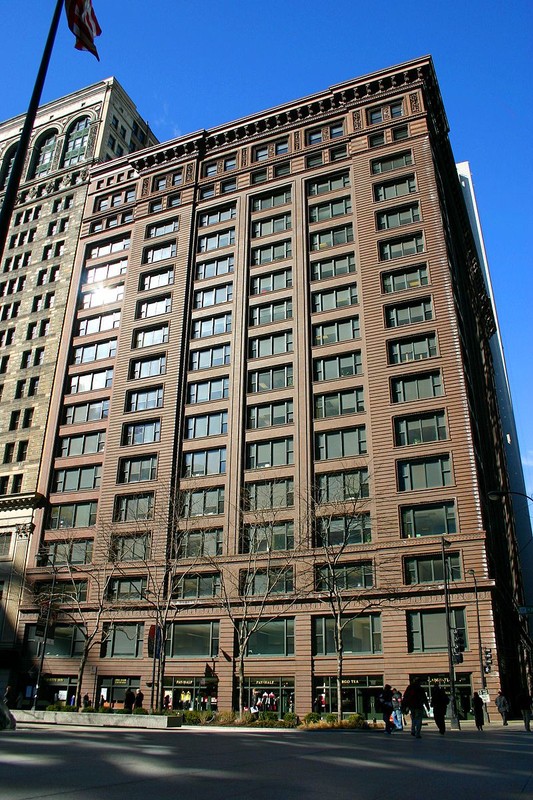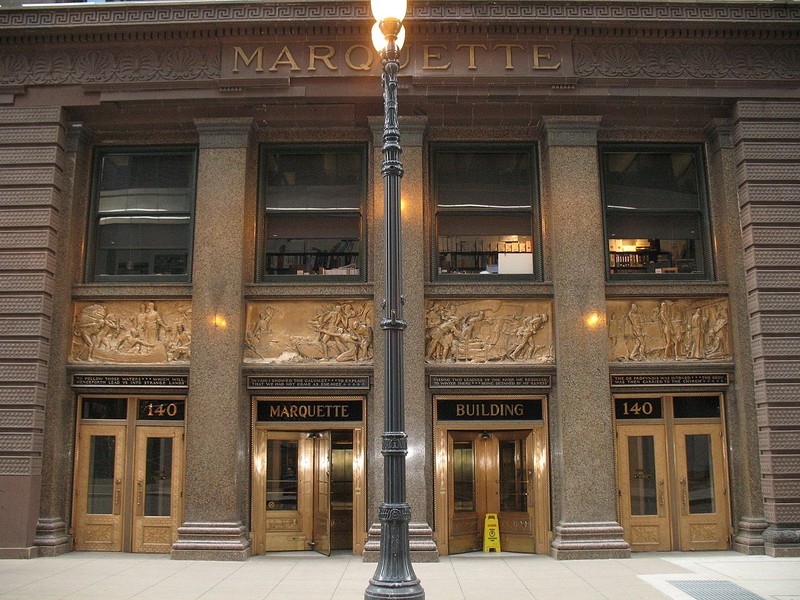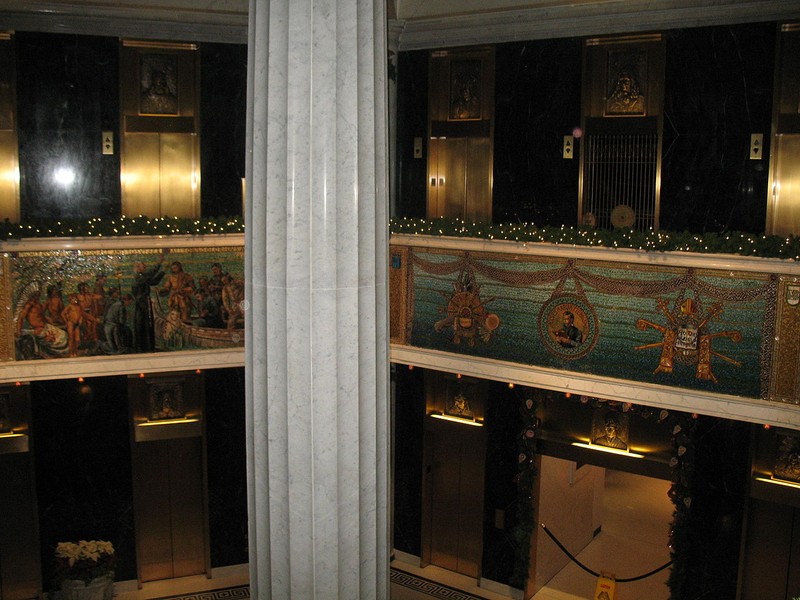The Marquette Building
Introduction
Text-to-speech Audio
Built in 1895 by the George A. Fuller Company, this Chicago landmark was one of the first steel-framed skyscrapers in the city. The building was named in honor of the French missionary Jacques Marquette, who with Louis Jolliet in 1674, became the first European to explorer and map the lands around Lake Michigan. The building was served as corporate headquarters to numerous railroad companies and other businesses over the years. During the mid-20th century, some of the historic buildings throughout the Loop such as Louis Sullivan's Stock Exchange were demolished in favor of new construction. The Marquette Building, like so many of the other historic buildings throughout the Loop, was saved due to the efforts of preservationists and community members who partnered with local government and business leaders. Since 1975, the building has been owned by the John D. and Catherine T. MacArthur Foundation, a leading supporter of education that is also working with the Landmarks Preservation Council of Illinois to restore and share the history of this building. The Foundation operates an interactive exhibit on the building's first floor that is open to the public, as well as virtual exhibits that are available by clicking on the link below.
Images
The Marquette Building was named a National Historic Landmark in 1976.


The lobby includes mosaics honoring Marquette that were made by Louis Comfort Tiffany-son of the famous jeweler Charles Tiffany.

Backstory and Context
Text-to-speech Audio
Following the destruction of the Great Chicago Fire of 1871, city leaders and investors were able to "start anew" and build a planned downtown business area that would soon rival New York.Once known as a livestock terminus, Chicago used the destruction of the fire as an opportunity to build an urban infrastructure that reflected the optimism of the city boosters. Combining innovations such as fireproof steel-framed construction with traditional building elements, the city of Chicago became so synonymous with the skyscraper that architects around the world referred to these buildings as belonging to the Chicago Style.
The Marquette Building serves as a classic example of the First Chicago Style of architecture-a style that can be seen in buildings throughout the Loop and other buildings that were constructed throughout the city in the late 19th and early 20th century. These buildings feature terra cotta and other forms of masonry that cover steel-frame construction. The Marquette Building features a red terra cotta facade that has been slightly darkened over the years due to the acidity caused by air pollution.
The buildings of the Chicago Style also feature ornamental details throughout the first two or three floors of the building's exterior, as well as an ornamental "cap" on the building's top floor. These details can be seen when viewing the ornate cornice and features of the top floor and the lower two floors with the rest of the building. The most distinguishing feature of the First Chicago School, and one that is especially prominent in the Marquette Building, is the use of large horizontal plate-glass windows. For more information about the windows of the Marquette Building, please see the short video below.
The Marquette Building serves as a classic example of the First Chicago Style of architecture-a style that can be seen in buildings throughout the Loop and other buildings that were constructed throughout the city in the late 19th and early 20th century. These buildings feature terra cotta and other forms of masonry that cover steel-frame construction. The Marquette Building features a red terra cotta facade that has been slightly darkened over the years due to the acidity caused by air pollution.
The buildings of the Chicago Style also feature ornamental details throughout the first two or three floors of the building's exterior, as well as an ornamental "cap" on the building's top floor. These details can be seen when viewing the ornate cornice and features of the top floor and the lower two floors with the rest of the building. The most distinguishing feature of the First Chicago School, and one that is especially prominent in the Marquette Building, is the use of large horizontal plate-glass windows. For more information about the windows of the Marquette Building, please see the short video below.
Sources
The Marquette Building, A Alandmark Preserved. MacArthur Foundation. http://marquette.macfound.org/ accessed 3/6/2016
